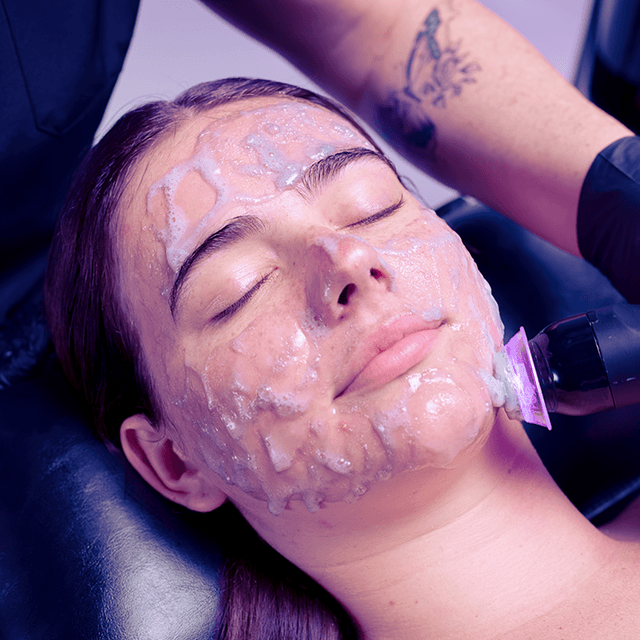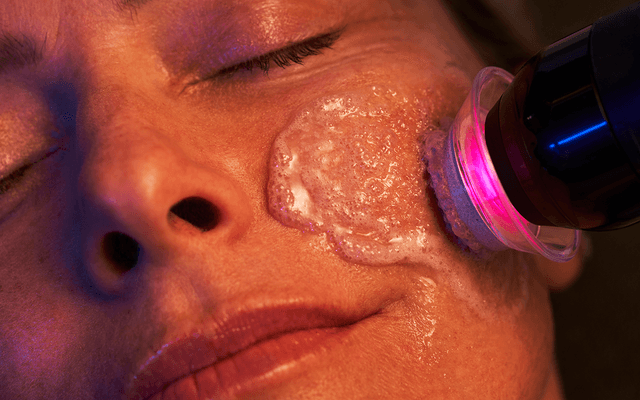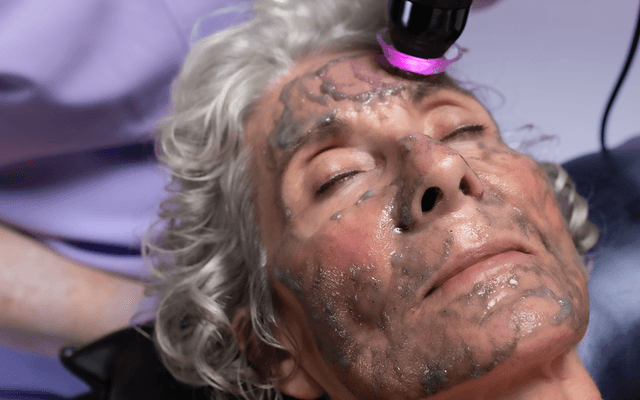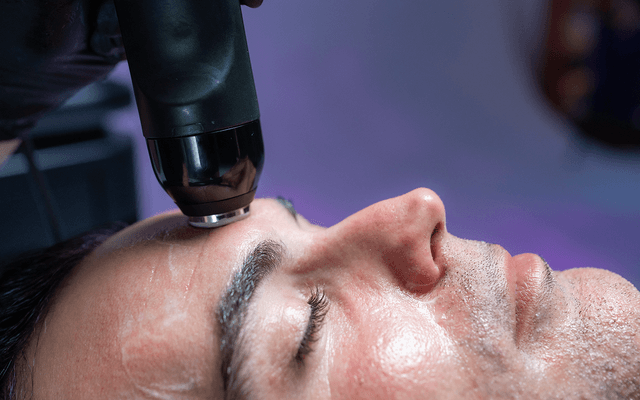Your skin is a remarkable organ, capable of protecting, repairing, and regenerating. Everyday stressors—like UV rays, pollution, harsh products, and aging—can slow these natural processes, leaving skin dull, dry, or less resilient.
For radiant, youthful skin, work with your skin’s natural biology. Avoid stripping or overloading it; instead, use products and treatments that strengthen its barrier, stimulate regeneration, and maintain balance.
In this guide, we'll explore how facials interact with skin's natural functions, the role of healthy skin in overall homeostasis, and what steps you can take to keep your skin functioning at its best.
Your Skin's Natural Functions—A Quick Refresher
Your skin is your body's largest organ, and its functions go far beyond aesthetics. Here's a simplified look at what it does for you every day:
1. Protection
The skin barrier shields you from environmental aggressors like UV rays, bacteria, and pollution while preventing water loss. According to research published in the Journal of Investigative Dermatology, when the barrier is compromised, transepidermal water loss (TEWL) increases dramatically, leading to irritation and accelerated aging. Studies show this increase can be as much as 50-75% in damaged skin compared to healthy skin.
2. Regeneration & Repair
Healthy skin renews itself through cellular turnover and collagen production. However, research from the American Academy of Dermatology indicates that collagen production declines by roughly 1% per year after age 25, making it harder to maintain firmness and elasticity—critical for anti-aging. By age 40, collagen density decreases by approximately 10–20%, and fibroblast activity slows dramatically.
3. Hydration Regulation
The skin balances water levels through the barrier function. TEWL increases naturally with age and environmental stress, leading to dryness, fine lines, and reduced resilience. Clinical studies demonstrate that skin with balanced hydration shows up to 25% greater elasticity compared to dehydrated skin, contributing to smoother texture and fewer fine lines.
4. Oxygen & Nutrient Delivery
Capillaries in the dermis deliver nutrients and oxygen to keep cells functioning optimally. Poor circulation or oxidative stress can slow this process, resulting in dullness and delayed healing. Research shows that improved microcirculation can increase skin radiance and healing capacity by up to 30%.
5. Homeostasis Maintenance
A lesser-known fact: skin plays a major role in overall body balance. How skin contributes to the maintenance of homeostasis includes regulating body temperature through vasodilation and sweating, acting as a sensory organ that responds to environmental changes, and playing an immune role by housing specialized immune cells. When these processes are disrupted, it impacts both skin health and overall wellness.
When these natural functions are compromised, your skin struggles to do its job—and it shows through visible signs of aging, sensitivity, and loss of radiance.
What Does Healthy Skin Look Like?
Understanding the signs of properly functioning skin helps you assess whether your current routine is working. You'll know your skin is functioning optimally when it displays these characteristics:
Visual indicators:
Appears smooth and even-toned, indicating balanced barrier function and proper hydration levels
Shows natural radiance without looking oily or overly matte
Has minimal visible pores and consistent texture
Displays even pigmentation with minimal dark spots or redness
Tactile signs:
Feels firm and elastic when gently pinched (regeneration and collagen production are active)
Bounces back quickly when pressed, showing good hydration
Feels soft and supple without being overly sensitive or reactive
Functional indicators:
Resists irritation from normal environmental factors
Heals quickly from minor cuts or blemishes (strong immune and repair responses)
Doesn't feel tight or uncomfortable throughout the day
Responds well to new products without excessive sensitivity
If your skin is dull, circulation or turnover may be weak. Fine lines signal dehydration or less collagen. Sensitivity usually means barrier damage; breakouts suggest microbiome or oil imbalance.
How to Support Skin's Natural Functions
The best natural skin care approach is simple: help your skin do what it's already designed to do. Here's how to work with each function:
1. Strengthen the Barrier to Protect Skin
Your barrier is your first line of defense. When compromised, it allows irritants in and moisture out, triggering redness, breakouts, and premature aging.
Support strategies:
Use gentle, pH-balanced cleansers that won't strip natural oils
Avoid over-exfoliation—limit physical scrubs to once weekly and chemical exfoliants to 2-3 times per week maximum
Incorporate barrier-repairing ingredients like ceramides, niacinamide, and fatty acids into your routine
Always wear broad-spectrum sunscreen with at least SPF 30—UV damage accelerates collagen breakdown and barrier dysfunction
Consider using a humidifier in dry environments to reduce environmental stress on your barrier
Clinical insight: Research published in Skin Pharmacology and Physiology shows that a damaged barrier can increase TEWL by over 50%, making barrier repair critical to restoring healthy function.
2. Encourage Natural Regeneration
Regeneration slows with age, causing fine lines, sagging, and dullness. Supporting collagen and elastin production is essential for maintaining youthful skin.
Support strategies:
Use retinoids (start with retinol for beginners) to boost cellular turnover and collagen synthesis
Incorporate peptides and growth factors that signal skin to produce more collagen
Add antioxidants like vitamin C, E, and green tea extract to protect existing collagen from damage
Opt for noninvasive treatments that stimulate repair without causing trauma
Get adequate sleep—skin repair peaks during deep sleep cycles
Clinical insight: Studies in the Journal of Cosmetic Dermatology show that consistent retinoid use can increase collagen production by up to 80% over six months of regular use.
3. Balance Hydration Levels
Healthy hydration requires more than moisturizers; minimize water loss so skin self-regulates.
Support strategies:
Layer hydrating products: start with humectants (hyaluronic acid, glycerin) then seal with occlusives (ceramides, squalane)
Avoid harsh products containing sulfates or high concentrations of alcohol that strip natural oils
Stay hydrated internally—aim for 8-10 glasses of water daily
Eat omega-rich foods like salmon, walnuts, and flaxseeds to strengthen the lipid barrier from within
Use a gentle toner to restore pH balance after cleansing
4. Boost Oxygenation & Nutrient Flow
A vibrant complexion depends on good microcirculation to deliver oxygen and nutrients to skin cells.
Support strategies:
Practice facial massage 2-3 times weekly to stimulate lymphatic drainage and circulation
Exercise regularly—cardio workouts boost overall blood flow and oxygen delivery to skin cells
Eat antioxidant-rich foods (berries, leafy greens, dark chocolate) to reduce oxidative stress
Consider facial treatments that promote oxygenation and circulation
Avoid smoking and limit alcohol, both of which impair circulation
5. Support Overall Homeostasis
Since skin contributes to the maintenance of homeostasis, lifestyle choices directly influence how well your skin functions.
Support strategies:
Prioritize 7-9 hours of quality sleep to regulate nightly repair cycles
Manage stress through meditation, yoga, or other relaxation techniques—high cortisol disrupts barrier recovery and collagen synthesis
Maintain a balanced diet rich in antioxidants, healthy fats, and vitamins A, C, and E
Stay consistent with your skincare routine to avoid disrupting skin's natural rhythms
Consider adaptogenic ingredients like ashwagandha or rhodiola to help skin cope with stress
What to Avoid—The Biggest Threats to Natural Function
If you want your natural functions to thrive, steer clear of these common disruptors:
Product-related mistakes:
Over-exfoliation, which destroys the barrier and triggers chronic inflammation
Using too many active ingredients simultaneously, overwhelming skin's repair mechanisms
Harsh treatments that cause trauma without supporting recovery
Inconsistent routines that don't allow skin to adapt and benefit from products
Lifestyle factors:
Skipping sunscreen, which accelerates collagen breakdown and causes pigmentation
Poor sleep habits that disrupt natural repair cycles
Chronic stress that elevates cortisol and impairs skin function
Unhealthy diet lacking in essential fatty acids and antioxidants
Smoking and excessive alcohol consumption, which reduce circulation and deplete nutrients
Professional Treatments That Support Natural Function
When choosing professional treatments, look for options that enhance rather than override your skin's natural processes. Treatments utilizing gentle oxygenation technology, radio frequency for collagen stimulation, and customized serums can support your skin's natural functions without causing trauma or extended downtime.
The key is finding treatments that work synergistically with your home care routine, providing deeper support for barrier function, cellular renewal, and hydration balance.
The Bottom Line: Work With, Not Against, Your Skin
The best natural skin care and anti-aging results come from enhancing, not overpowering, your skin's biology. Focus on barrier protection, natural regeneration, and balanced hydration to maintain youthful, resilient skin long term.
Consistency is key—gentle care over time outperforms harsh treatments. Support your skin’s natural defenses to achieve lasting radiance and health.





















